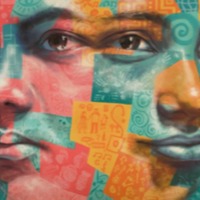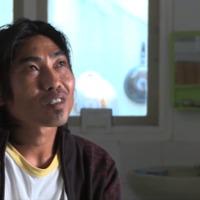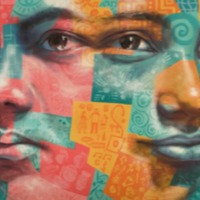
Ellie
The UK National Crime Agency estimates 3,309 potential victims of human trafficking came into contact with the State or an NGO in 2014. The latest government statistics derived from the UK National Referral Mechanism in 2014 reveal 2,340 potential victims of trafficking from 96 countries of origin, of whom 61 percent were female and 29 percent were children. Of those identified through the NRM, the majority were adults classified as victims of sexual exploitation followed by adults exploited in the domestic service sector and other types of labour exploitation. The largest proportion of victims was from Albania, followed by Nigeria, Vietnam, Romania and Slovakia. Ellie was trafficked from Africa to the UK where she was forced in to commercial sexual exploitation. Here Ellie recounts her experience with law enforcement after escaping from her traffickers.

Ismail
Men, women and children make up those trafficked in Indonesia, subjected to forced labour and commercial sexual exploitation. Brokers working in rural areas are known to lure men and boys into forced labour on palm oil, rubber and tobacco plantations. This is often done through debt bondage, in which employers claim the enslaved owes them money for costs that were never agreed upon and as such they must pay off these debts before they can regain their freedom. Threatened with violence and death they become trapped and feel unable to escape the long working hours and heavy labour they must endure without pay. Rising unemployment and slowed job creation has pushed people into the informal sector unprotected by labour laws, and thus has made them more vulnerable to exploitation. There are currently only 18 shelters in Indonesia working to rescue and rehabilitate traffic victims. Unable to afford to continue his education and believing that he could earn more money abroad to support his family, Ismail had been working illegally in Malaysia when he was deported to Dumai, Sumatra where he was approached by a man claiming to be an official. From the moment he departed Dumai Ismail began to accumulate debt, he was told he would be working in the logging industry to pay this off. Subjected to heavy labour under the threat of death, it was only when he was transferred to another workplace with a more lenient boss that Ismail was able to escape and reunite with his family.

Ada
Born in Albania, Ada was trafficked into Italy, where trafficking victims also arrive from Nigeria, Romania, Bulgaria, China, and South America. One NGO estimates that 48 percent of the prostitutes in Italy are from Eastern Europe. Many women are trafficked into richer Western European countries from the poorer Eastern countries, including Albania. The fall of communism in 1991 led to a rise in organized crime in Albania: in 2001 it was estimated 100,000 Albanian women and girls had been trafficked to Western European and other Balkan countries in the preceding ten years. More than 65 percent of Albanian sex-trafficking victims are minors at the time they are trafficked, and at least 50 percent of victims leave home under the false impression that they will be married or engaged to an Albanian or foreigner and live abroad. Another ten percent are kidnapped or forced into prostitution. The women and girls receive little or no pay for their work,and are commonly tortured if they do not comply.